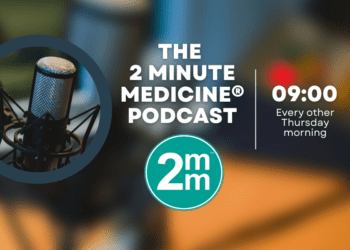Second-hand fine particulates dangerously elevated in smoking homes
1. Fine particulate matter concentrations were about 10 times greater in smoking versus non-smoking homes.
2. While non-smoking homes had fine particulate matter levels below the World Health Organization recommended levels, smoking homes had nearly 4 times the recommended levels.
Evidence Rating Level: 2 (Good)
Study Rundown: The harms of second-hand tobacco smoke, especially of inhalation of fine particulate matter (PM2.5), have now been validated by numerous studies. Public interest is in line with these findings and is focused on controlling PM2.5 from cigarettes and other sources. Most studies have focused on identifying concentrations and sources of PM2.5 in outdoor environments, but considering that most people spend their time indoors, a need for understanding indoor microenvironments is essential for assessing and reducing risk. This study combined and analyzed data from four Scottish studies that measured PM2.5 concentrations in the homes of smoking and non-smoking families to assess the increase in PM2.5 attributed to smoking. Though heterogeneity was present across studies, it was clear that PM2.5 values were higher in smoking homes than non-smoking, with the most conservative estimate being 3 times greater, the average being 10 times greater, and the worst-case scenario being almost 70 times greater. In relation to the World Health Organization (WHO) recommended levels of PM2.5 exposure, non-smoking homes were easily below the danger level while smoking homes were on average nearly 4 times greater than the danger level. Through well-defined models of lifetime risk, the study found that switching from a smoking to non-smoking environment would reduce total PM2.5 exposure by 75-80%.
While this study was able to help quantify indoor PM2.5 concentrations, heterogeneity between the studies presents a significant barrier to estimating the overall risk. The study that reported the highest average PM2.5 concentrations found 20 fold higher levels than the study with the lowest average PM2.5 concentrations. So while it’s clear that PM2.5 was elevated above the WHO recommendations across studies, it is still not clear to what extent. This makes the attributable risk difficult to assess as well. Further, there was only one study of non-smoking controls used in the analysis. All in all, while these data support the danger of second-hand smoke, the broad range of findings severely limit defining the attributable risk associated with elevated PM2.5 levels in smoking homes.
Click to read the study, published today in Tobacco Control
Relevant Reading: Asthma in the Inner City and Indoor Environment
In-Depth [meta-analysis]: This study is a compilation of four Scottish studies with different goals but with data on PM2.5 levels in smoking and non-smoking homes. The recruitment methods, both in form and location, for each study varied greatly but all recruited participants were willing to have their indoor air quality measured. Given the heterogeneity of recruitment protocols, the response rates also varied from 3.1 to 80% across studies. Non-smoking data was collected in only one study. Overall, 93 smoking and 17 non-smoking homes were included in the analysis. PM2.5 concentrations in smoking homes ranged from 3 to 70 times (10 times more on average) that of non-smoking homes. A carefully constructed model of lifetime risk, including differences in lung volumes and diurnal/nocturnal air pollution patterns, was able to show a 75-80% predicted decrease in PM2.5 exposure if a switch from a smoking to non-smoking household environment was made. The WHO recommendation of less than 10μg/m3 annual exposure to PM2.5 was exceeded in smoking households from all four studies but to widely differing degrees (~10 μg/m3 to 198 μg/m3).
More from this author: Suicide tourism in Switzerland; Decreased facial expression variability linked with serious cardiac disease; HIV infection may protect against multiple sclerosis; Social cohesion may reduce heart attack risk
Image: PD
©2012-2014 2minutemedicine.com. All rights reserved. No works may be reproduced without expressed written consent from 2minutemedicine.com. Disclaimer: We present factual information directly from peer reviewed medical journals. No post should be construed as medical advice and is not intended as such by the authors, editors, staff or by 2minutemedicine.com. PLEASE SEE A HEALTHCARE PROVIDER IN YOUR AREA IF YOU SEEK MEDICAL ADVICE OF ANY SORT.




![Active smoking cessation intervention may provide tangible results [Project CLIQ]](https://www.2minutemedicine.com/wp-content/uploads/2014/12/smoking-e1418644951268-350x250.jpg)


